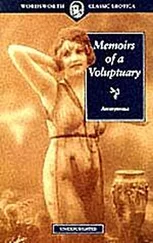After she finished her performance, a man approached Marilyn from behind. While the cameras cut to a birthday cake being wheeled in, she was escorted from the stage and away from a moment in which she had wanted to participate: President John F. Kennedy climbing the stairs to the stage to say a few words of appreciation. Marilyn had wanted to simply give him a quick peck and then shuffle back offstage. Yet there were many who felt that she was too unpredictable that night, too erratic. “Yes, there was some anxiety surrounding her appearance,” recalled Diahann Carroll. “I can’t say that I knew why, or what was going on. But I do remember a certain level of… tension. Some people were quite… edgy.”
Once backstage, Marilyn heard the president express his gratitude for her performance. “Now I can retire from politics,” he said, “after having ‘Happy Birthday’ sung to me in such a sweet and wholesome way.” A couple of months prior, she had told JFK how her ex-husband, Joe DiMaggio, wanted her to retire from show business to be his wife. Now, hearing his words, a look of astonishment crossed her face. Later, she would ask his sister, Pat Kennedy Lawford, if he had made the statement for her benefit. The reasonable response to her question was most certainly no. However, at that point, Marilyn’s supply of reason had been dwindling for quite some time. She had begun living her life in clearly defined segments of clarity and confusion. For years Marilyn Monroe had been able to use her craft to perpetuate an illusion. Indeed, the star that people saw toward the end of her life was but a shell game—a well-crafted presentation of someone who had disappeared years ago… that is, if she ever really existed.
PART ONE
The Beginning
Norma Jeane’s Foster Mother, Ida
H ow to describe Ida Bolender? With dark brown eyes behind large, round spectacles on an elongated and severe face, she looked like the classic schoolmarm. She could have been attractive, had she been interested. However, she didn’t have time to worry about superficialities. Her hairstyle spoke volumes. Cut bluntly just below her ears and unevenly around her head, her hair looked as if she’d taken scissors and chopped away without any forethought. The total effect was a haphazard, inky black coif around her head. Her clothing also said much about her. She wore the same type of dress every day—a short-sleeved frock that hung loosely on her frame like a gunnysack. She called this garment, functional and practical, her “house dress.” Though still a young woman of just thirty-seven, she was such a model of efficiency and diligence she seemed much older—maybe in her fifties. She was always busy, whether with a full schedule of housework or with the day’s errands of devotion to the Hawthorne Community Church in Hawthorne, California, of which she was a parishioner. *
To some, Ida seemed a somewhat cold and unfeeling woman who, despite being a foster mother, didn’t really take to children. Sometimes she appeared distant and remote, which is why there was some question as to whether she sincerely had the desire to raise children or simply had an interest in the money she received to take care of them—roughly twenty-five dollars a week per child from either the child’s family or the State of California. †It wasn’t a fair characterization. In fact, Ida had opened her home to underprivileged children during the challenging 1920s. This was a time when scores of young people were being put up for adoption, due in part to a floundering economy, and also to the needs of a growing number of young women who felt a calling to enter the workforce. Though she certainly had no interest in business, Ida did want a better life, one her husband’s meager salary as a mailman could not provide. The extra income she received from foster parenting may not have been plentiful, but it was enough for her to feel some worth and also a certain degree of independence. Moreover, as her foster daughter Nancy Jeffrey explains, “One of the reasons Ida may have appeared disconnected was because she was hearing impaired and without the benefit of a hearing aid. She often had to read lips, especially as she got older.” A proud woman, Ida Bolender would just as soon people think she was hearing what they were telling her when she really wasn’t. Thus her seeming aloofness.
The daughter of devout Baptists, Ida was taught that an abundance of pride was the devil’s work. Therefore, she rarely acknowledged her own achievements, such as good grades in school or being popular with other students. Her parents were strict and uncompromising. Every day was a test from God. Pass or fail (and she usually failed, according to them anyway, especially her mother), it was sure to be a long and difficult exam. Her parents had instilled in her so urgent a sense of responsibility and duty, she’d allowed her youth on a small farm near Buffalo, New York, to pass her by without ever having much fun.
In 1918, after living a chaste early adulthood, Ida married a quiet, gentle man named Albert Wayne—known primarily by his middle name. He’d also been raised on a farm, this one in Brown County, Ohio. Since he had been brought up with essentially the same beliefs as Ida, he had simple, attainable goals for the future. In fact, the couple had no plans when they married, other than to work hard, pray hard, and try to live what they both viewed as decent lives based on scripture. They moved to California in 1919.
Besides foster caring, Ida had few passions in life—and, truthfully, being a foster mother wasn’t as much a passion for her as it was a duty. However, as a fervent member of her church, she was quite enthusiastic about fund-raising. The church held bake sales and raffles, but its most lucrative venture by far was its widely praised rummage sale. Women would travel great distances to pick through the discarded belongings of the church’s many parishioners while searching for just the right hat, dress, or other clothing at a price that could be considered a “steal.” However, not only would the possessions of churchgoers go up for sale, but other items as well. According to the family’s history, in order to enhance her own sales table, Ida formed a secret alliance with a woman named Anna Raymond, a seamstress in Hollywood who would bring boxes chock-full of items to the Bolender residence on a monthly basis. These pieces were mostly garments that Ida would never think to wear, such as colorful flapper dresses, ornate costume jewelry with enormous imitation stones, or high-heeled shoes that made Ida shudder. It’s a safe assumption that these items were leftovers from various film productions, but just how Miss Raymond happened to come into possession of them is, all these years later, impossible to ascertain.
Over the years, Ida often spoke to other members of her congregation about certain women in her community she felt were “too boastful.” Inevitably, these were ladies who flaunted their femininity to get what they wanted, conduct Ida viewed as tantamount to a mortal sin. As it would happen, a woman whose behavior fit just that description came into Ida’s life in a place that might seem ironic: the Hawthorne Community Church. Indeed, whenever Ida Bolender stood watch at her rummage-sale table, she looked forward to selling as much of her tacky merchandise as possible to one eager customer in particular—her neighbor across the street, Della Monroe.
Norma Jeane’s Grandmother, Della
B y 1925 standards, forty-nine-year-old Della Monroe was certainly not a wealthy woman, but she still had a craving for extravagance. Without the ability to purchase particularly lavish items at retail prices, she hunted down bargains wherever she could—even in places where she didn’t feel particularly welcome. Descending the steps into the basement of the Hawthorne Community Church, she had to have heard the judgmental whispers of those who wouldn’t have used the word “elegant” to describe her secondhand fur and costume jewelry.
Читать дальше












